"The MPD Community Service Award sponsored by Norris Harkness, Hon. PSA, FPSA, was won by the 8-16 Cine Club of Detroit, Mich., in recognition of outstanding efforts in producing an instructional film on diabetes for the Michigan Diabetic Association. Titled If You Have Diabetes, this 700-foot 16mm production is designed to aid persons who have recently discovered that they have diabetes, in learning to keep the disease under control. The project was initiated by an 8-16 Club member who is a diabetic. The script was written by another club member with technical assistance provided by physicians on the staff of a major Detroit hospital. All photography, acting, editing, etc., was done by club members" PSA Journal, Sept. 1964, 51.
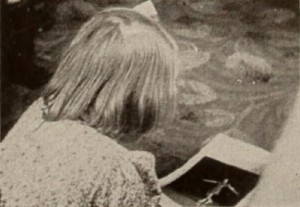
"Victor E. Pye, using his family as the principal actors in a sincere and competent photoplay, brings us the flavor of family life in far away Australia. With a sure cinematic sense, he opens Inspiration with a moving dolly sequence which carries you into the house directly to the star of the film. With creditable economy of footage and compelling acting and directing, Mr. Pye tells a simple tale of a once crippled child returned to health through the inspiration of a famous figure skater — herself a former "polio" victim. There are also several scenes from which it becomes obvious that the movie maker has profited from viewing theatrical productions with his mind on his own filming. Suave and sensitive, Inspiration becomes moving and believable as the plot unfolds." Movie Makers, Dec. 1946, 488.
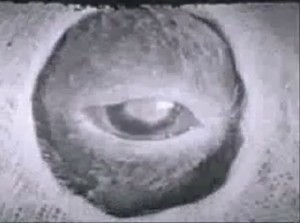
"Keratoplasty, by Henry M. Lester, ACL, is a beautifully perfect record of the operation of a corneal transplant for leucomateous eyes, filmed entirely in Kodachrome. The operation is performed by Dr. Ramon Castroviejo, a rabbit being the subject. Aside from the fact that this clearly executed film records an important and extraordinarily difficult operation in this field, it is notable for its brilliant photographic technique in handling the ultra closeup. In much of the footage, the eye itself practically fills the frame and, in this limited field of action, Mr. Lester has successfully shown every delicate bit of operative technique that is involved in this extremely sensitive surgical procedure. The area is so lighted that no shadows are cast to obscure detail, and the amazing rendition' of the delicate bit of transplanted tissue, the suturing and the various solutions employed, all in full color, is a genuine tribute to Mr. Lester's mastery of the Kodachrome process." Movie Makers, Dec. 1935, 550.
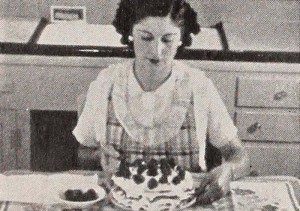
"Within the brief confines of Lady on June Street, Leo Caloia presents a satisfying example of the personality film worked out in story form. Faced with the common problem of family filming, he has resolved the riddle with imagination, humor and marked cinematic ability. The "lady" in question is pictured as a lazy, luxury loving wife, spiritually eager to be the best of helpmates, but physically enslaved to satins and sweetmeats. Dozing, as she regards with languorous ambition an advertisement for homemade shortcake, she dreams vividly of a sweet but unaccustomed success with pot and pan. Crash! In her dream, the lady slips, and her magnificent shortcake slithers across the kitchen linoleum. Bump! In reality, she has rolled sleepily from her couch, to awake with a thud on the living room floor. The film fades swiftly as she hurries the tops off canned beans and sauerkraut." Movie Makers, Dec. 1939, 632.
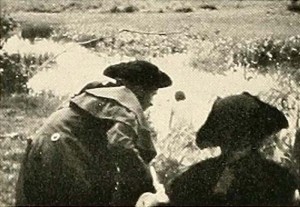
"The Least of These handles a difficult subject in a way which promotes the cinematic medium to a high position as a sympathetic interpreter of the afflicted. Ripley W. Bugbee has presented a fine understanding of the problem of those whose minds are crippled and has given a clear cinematic exposition of the humane methods used in one institution to bring to these persons, young and old, a productive happiness. The film opens with a historical presentation of the problem of feeblemindedness, in a sequence which is smooth and effectively handled in costuming and direction as well as in photographic technique. Passing on to modern times, the work of a present day institution is shown in all its aspects. The handling of the color medium is exceedingly well done, particularly in those ordinarily difficult shots of interior activities. The closeup work, showing details of the manual operations involved in craftsmanship, is unusual in quality. Well chosen angle shots add variety to the film, which is expertly titled in the Kodachrome medium." Movie Makers, Dec. 1937, 603.
"doc. didattico"/educational documentary
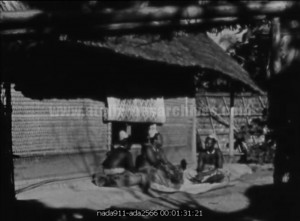
"On an actual Protestant missionary who brought Christianity, education, and medical aid to an illiterate, pagan tribe in the Belgian Congo." National Archives.
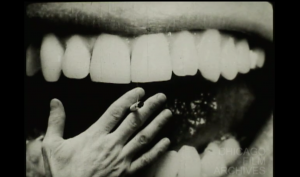
"An amateur anti-smoking film produced by Helen and Sidney Mortiz that mocks cigarette advertisements of its day. Shot in the late 1960s or early 1970s and distributed by the Society of Amateur Cinematographers (SAC)." Chicago Film Archives
"Fundraising film about Queen Alexandra Solarium for Crippled Children at Mill Bay, near Victoria." (Duffy, Camera West)
"Love is found between a man and his mate, between adults and their children, for brothers and sisters, and in countless other familiar ways. But in this film we are introduced to yet another" PSA Journal, Aug. 1967, 37.
Total Pages: 10